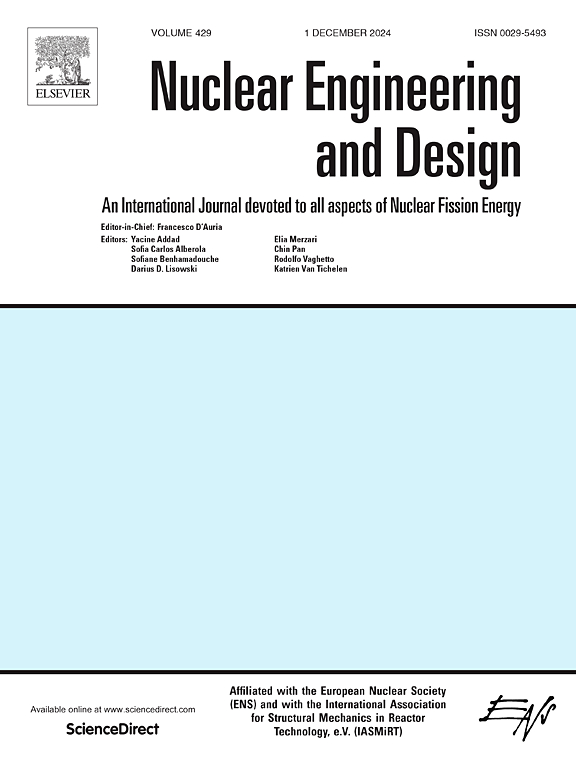Effects of second phase particles and pores on grain boundary migration during solid-state sintering: A phase-field study
IF 1.9
3区 工程技术
Q1 NUCLEAR SCIENCE & TECHNOLOGY
引用次数: 0
Abstract
In the present work, a new phase-field model was developed to simulate the effects of second phase particles and pores on grain boundary (GB) removement during solid-state sintering of ceramic nuclear fuel. The simulation results show that the second phase particles near the GB make the interface energy distribution steeper, and the GB-particle equilibrium dihedral angle is related to the GB-particle interface energy and the GB-pore interface energy. During sintering, the contact between particles and GB in the early stage promotes the shrinkage of GB. However, during the later stage, the shrinkage of GB is suppressed due to the interaction of second phase particles and crystal grains. When the particles and pores act on the GB at the same time, the GB usually move together with the pores, while the GB prefer to leave the particles ultimately. The sintering simulation of polycrystalline containing both second-phase particles and pores showed that, when the particle area fraction increases, the growth rate of crystal grains slows down and the final grain size decreases. Consequently, second phase particles with different volume fractions can be doped to control the final average grain size during sintering.

求助全文
约1分钟内获得全文
求助全文
来源期刊

Nuclear Engineering and Design
工程技术-核科学技术
CiteScore
3.40
自引率
11.80%
发文量
377
审稿时长
5 months
期刊介绍:
Nuclear Engineering and Design covers the wide range of disciplines involved in the engineering, design, safety and construction of nuclear fission reactors. The Editors welcome papers both on applied and innovative aspects and developments in nuclear science and technology.
Fundamentals of Reactor Design include:
• Thermal-Hydraulics and Core Physics
• Safety Analysis, Risk Assessment (PSA)
• Structural and Mechanical Engineering
• Materials Science
• Fuel Behavior and Design
• Structural Plant Design
• Engineering of Reactor Components
• Experiments
Aspects beyond fundamentals of Reactor Design covered:
• Accident Mitigation Measures
• Reactor Control Systems
• Licensing Issues
• Safeguard Engineering
• Economy of Plants
• Reprocessing / Waste Disposal
• Applications of Nuclear Energy
• Maintenance
• Decommissioning
Papers on new reactor ideas and developments (Generation IV reactors) such as inherently safe modular HTRs, High Performance LWRs/HWRs and LMFBs/GFR will be considered; Actinide Burners, Accelerator Driven Systems, Energy Amplifiers and other special designs of power and research reactors and their applications are also encouraged.
 求助内容:
求助内容: 应助结果提醒方式:
应助结果提醒方式:


